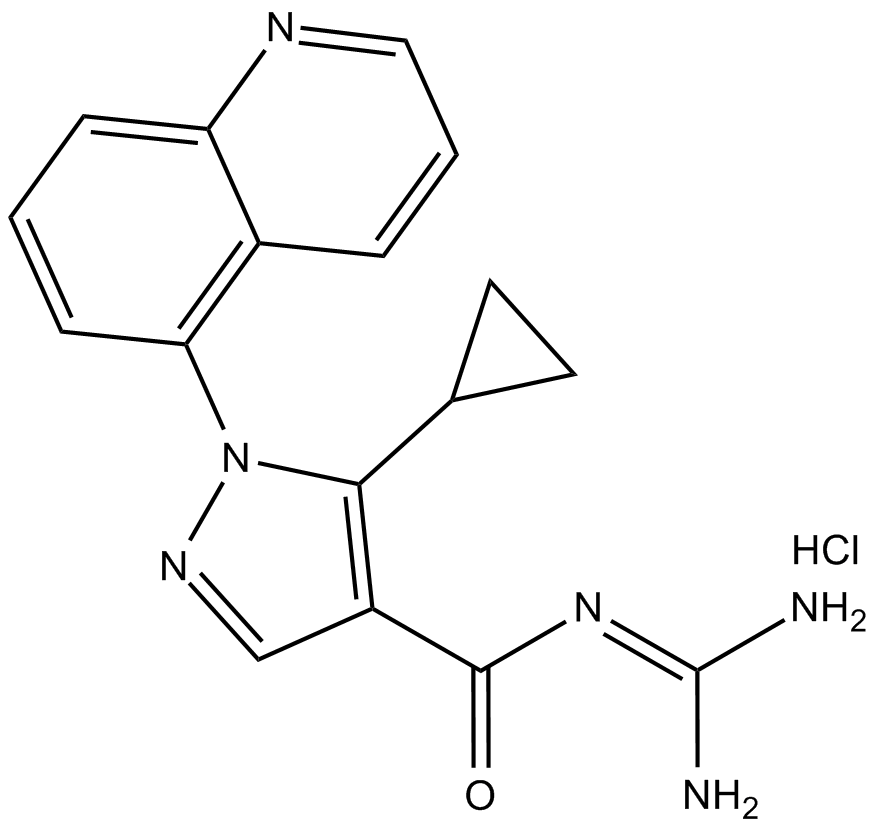Zoniporide (hydrochloride) (Synonyms: CP 597,396) |
| Catalog No.GC15126 |
sodium-hydrogen exchanger isoform-1 (NHE-1) inhibitor
Products are for research use only. Not for human use. We do not sell to patients.

Cas No.: 241800-97-5
Sample solution is provided at 25 µL, 10mM.
Zoniporide (hydrochloride) is a novel, potent, and selective sodium-hydrogen exchanger isoform-1 (NHE-1) inhibitor [1]. The Na+/H+ exchanger (NHE) has been involved in intracellular pH homeostasis of many mammalian cell types. Until now, seven NHE isoforms (NHE1–NHE7) have been identified. NHE1 is the most predominant isoform expressed in heart responsible for maintaining cardiomyocyte pH homeostasis. Activation of NHE is essential for the restoration of physiological pH. Hyperactivation of NHE1 during ischemia–reperfusion episodes disrupts the intracellular ion balance, leading to cardiac dysfunction and damage [2].
In vitro: Zoniporide inhibited human NHE-1 with an IC50 of 14 nM, showed >150-fold selectivity against other NHE isoforms, and potently inhibited ex vivo NHE-1-dependent swelling of human platelets. In the isolated heart (Langendorff), zoniporide dose-dependently reduced infarct size with an EC50 of 0.25 nM. Zoniporide at 50 nM reduced infarct size by 83% [1].
In vivo: Zoniporide was well tolerated in preclinical animal models, exhibited moderate plasma protein binding with t1/2 of 1.5 h in monkeys. In rabbit models of myocardial ischemia-reperfusion injury, zoniporide significantly reduced infarct size without adverse effects. In open chest, anesthetized rabbits, zoniporide reduced infarct size in a dose-dependent manner with an ED50 of 0.45 mg/kg/h. Zoniporide also inhibited NHE-1-mediated platelet swelling. Zoniporide attenuated postischemic cardiac contractile dysfunction in conscious primates, and reduced both the incidence and duration of ischemiareperfusion-induced ventricular fibrillation in rats [1].
References:
[1] Tracey W R, Allen M C, Frazier D E, et al. Zoniporide: a potent and selective inhibitor of the human sodium-hydrogen exchanger isoform 1 (NHE-1)[J]. Cardiovascular drug reviews, 2003, 21(1): 17-32.
[2] Masereel B, Pochet L, Laeckmann D. An overview of inhibitors of Na+/H+ exchanger[J]. European journal of medicinal chemistry, 2003, 38(6): 547-554.
Average Rating: 5 (Based on Reviews and 18 reference(s) in Google Scholar.)
GLPBIO products are for RESEARCH USE ONLY. Please make sure your review or question is research based.
Required fields are marked with *




















